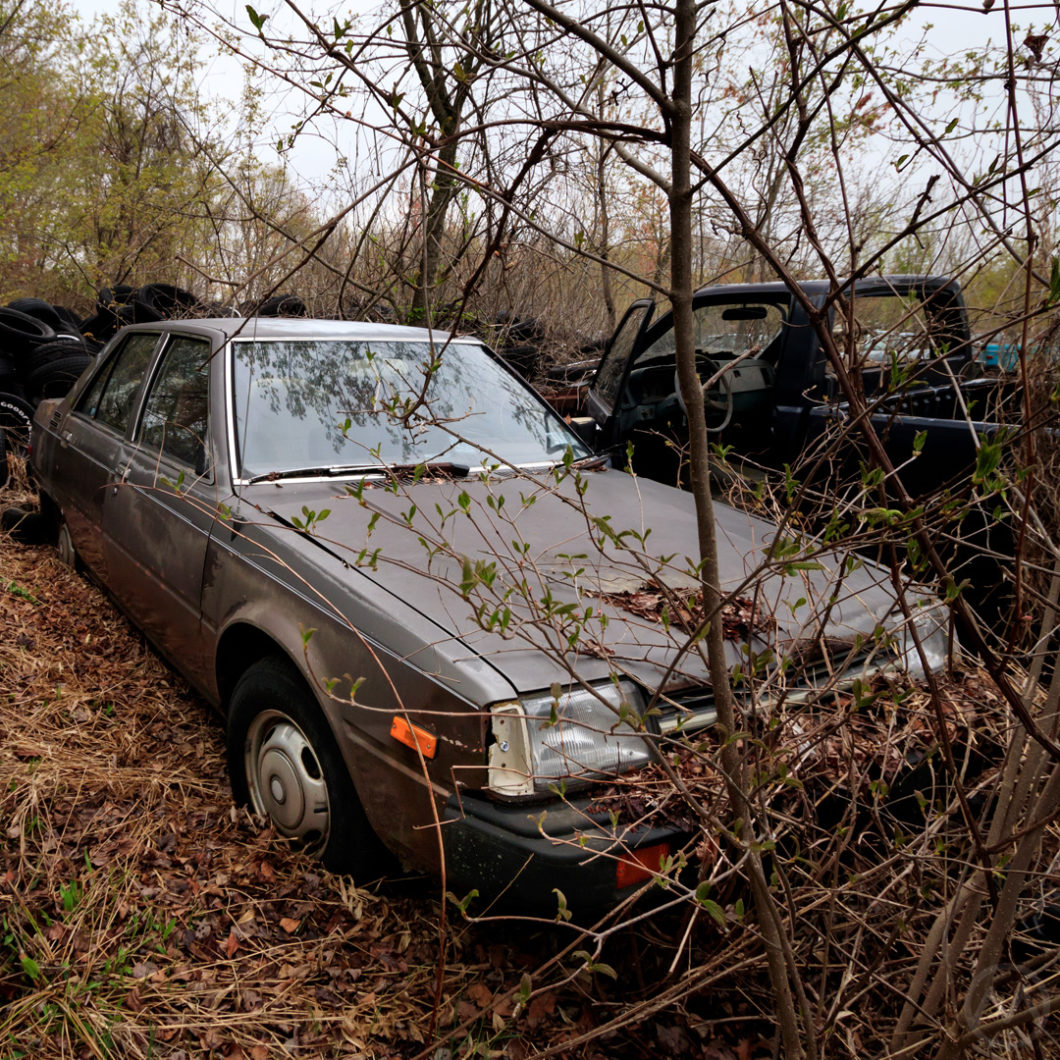All but forgotten today, this nondescript little sedan is a Mitsubishi Tredia.
This a late Tredia with flush aero lamps instead of sealed beams, but the Tredia, along with its coupe companions the Cordia and the Starion, and the Mighty Max pickup, spearheaded Mitsubishi’s U.S. launch in the USA. They went on sale on December 8, 1981.
Of course, by then, Mistubishis had already been sold in the U.S. by Chrysler for a decade. Now consumers would get them directly from Mitsubishi and the Tredia, the company hoped, would be the volume leader. In 1982, they were sold in just 22 states from 65 dealers (and sold as 1983 models), but things expanded quickly.
Mitsubishi and Chrysler
Back home in Japan, the giant conglomerate Mitsubishi Heavy Industries spun off Mitsubishi Motors into a subsidiary in 1970, and Chrysler took a 15% stake in it a year later – in hopes of eventually buying it outright. That began a long (and often contentious) partnership.
Chrysler needed small cars and Mitsubishi wanted to export them, and once tied up the little Dodge- and Plymouth-badged Mitsubishis did much better in the U.S. than the old Hillman and Simca products they replaced.
By 1978, 40% of Mitusbishis were exported from Japan to other countries and the U.S. was a major market for those cars.
But the two partners fought constantly. And on many subjects. Mitsubishi’s Colt network in Europe threatened Chrysler Europe/Simca. Mitsubishi in return resented the Omni/Horizon in America and it’s Simca equivalent in Europe – both competed directly with the new front-drive Colt.
Chrysler U.S. product demands were often heavy-handed and Mitsubishi’s management often disagreed with their choices.
When Chrysler hit the skids in 1979-80, it looked like their partnership might go under altogether. Mitsubishi gained a huge asset when it bought Chrysler Australia during the dire period of 1980, just as Peugeot had bought Chrysler Europe. Chrysler Australia became Mitsubishi Motors Australia, helping Mitsu become a major player in that country.
Going Solo
Around that time, Mitsubishi decided to hedge its bets and launch its own U.S. network for the 1980s – but then came the Reagan-era “Voluntary Export Restraint” quotas, limiting Mitsubishi’s first year of sales to 30,000 cars. Chrysler and Mitsubishi eventually decided to work around the quotas by building a factory – Diamond-Star Motors in Illinois, but that was still some years off.
In fact, there was another Chrysler connection at the newly established Mitsubishi Motor Sales of America Inc., now Mitsubishi Motors North America.
Above Japanese executives Tohei Takeuchi and Takeo Seki, the company was run by COO Richard D. Recchia. Recchia, who would later publicly clash with Lee Iacocca, was a long-time Chrysler veteran who had worked for Chrysler for 14 years before leaving to head up Fiat’s American effort in 1977.
Not particularly liking the direction Fiat was heading, he’d departed in early 1980, ostensibly to run his own consulting business. In reality, he’d been quietly approached by Mitsubishi. The new subsidiary wasn’t set up for many months, however, and Recchia considered it a gamble to wait.
While Fiat floundered, Recchia would oversee huge growth at Mitsubishi. By 1989 it had 300 dealers and was selling over 150,000 cars a year in the United States. Recchia retired in 1997.
Cordia & Tredia
The Tredia was a family sedan aimed at Corollas and Datsun 510s. The cool Cordia coupe used the same pieces in a futuristic wedge-shaped hatch, but the Tredia was an upright family car. Power came from a 2-liter 4G63 or a 116-hp 1.8L Turbo 4G62.
The Turbo was quick and handsome, but the base Tredia was not a particularly exciting car. The “twin stick” arrangement seen in the Colt was also used on some early Tredias; which also had a 5-speeder (eventually supplanting the twin-stick) or a 3-speed auto.
The Tredia was bigger than a Colt/Lancer, but smaller than a Galant. All of Mitsubishi’s freshman U.S. class were meant not to compete directly with Chrysler’s captives – though that went by the wayside by 1985 as Mitsubishi started selling Colts of it’s own that were identical to the Dodge/Plymouth versions.
The Tredia/Cordia were never the big sellers Mitsubishi had hoped for but continued into 1988 and got a major refresh in 1986. They are a historical footnote now – it was the Starion (so popular Chrysler demanded a version) and Montero that helped the brand go national.
Special thanks to Kenny Jones, caretaker of what remains of this Tredia.


Never saw these in Australia – we had the Sigma up to 1985, followed by the Magna.